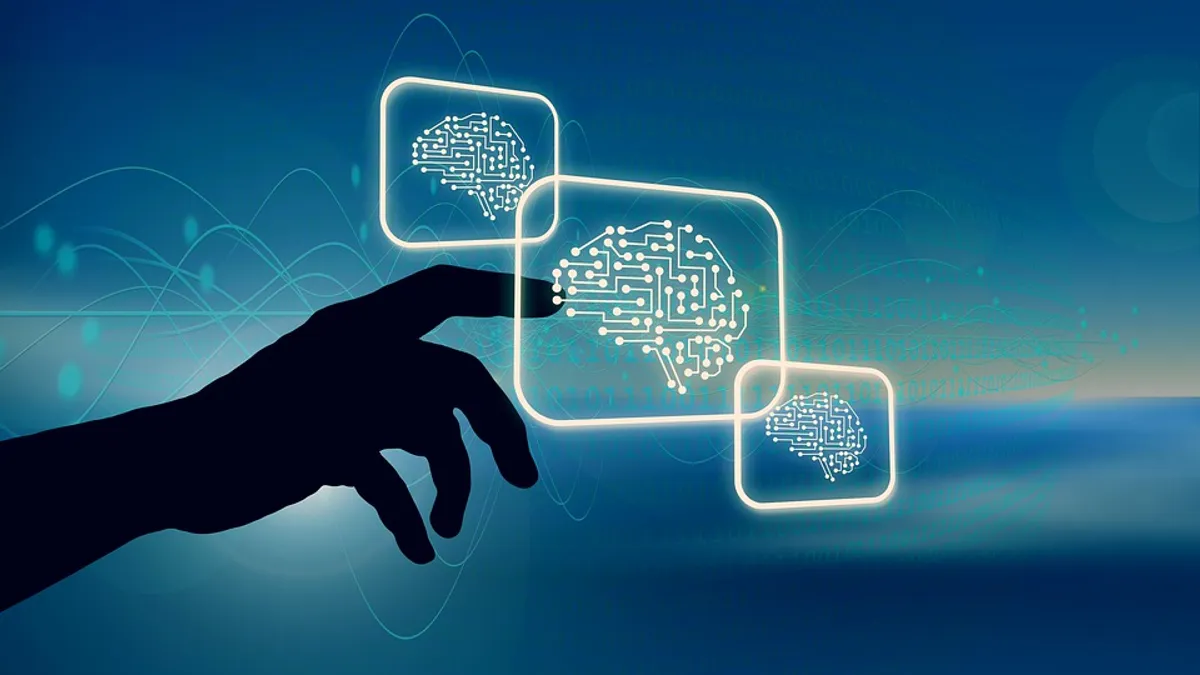The adoption of AI in pharma has rapidly brought a positive sea change of increased efficiency. From early drug discovery to clinical trial design to commercialization, AI and machine learning are transforming the industry for the better in critical new ways.
Yet, even though AI is being used to resolve various pain points, the technology is creating a few sticky situations of its own.
Recently, PharmaVoice published an overview of the AI market in pharma with a look at how its adoption has picked up speed during COVID, how its use-cases are evolving and the opportunities AI could create for the industry down the road.
Now, we’re looking beyond the buzz and examining the potential roadblocks that need to be overcome for the industry to fully realize AI’s potential.
The bias barrier
The inherent bias of AI isn’t just a pharma problem — it’s a well-documented challenge plaguing every industry using the technology. Simply put, AI and machine learning are only as good as they data you put into it. If that data is biased, it will produce biased results.
“In the field of medical imaging, AI algorithms are being used to help diagnostics,” Dan Chancellor, the Thought Leadership director of Informa Pharma Intelligence says, explaining how this bias can play out. “If all of those images are of Caucasian patients, then what you’re training the AI to do is diagnose the disease in just Caucasian patients.”
But the industry is well aware of this issue and with more companies leveraging AI, more effort is being put into creating data sets that will generate less biased and more targeted results.
Recently, Sanofi’s chief scientific officer, Frank Nestle, spoke to PharmaVoice about this challenge just weeks after the French pharma company announced its massive AI collaboration deal with Exscientia. According to Nestle, the French pharma company has hired a new chief data officer who is honing in on the need to internally develop better data sets for AI.
“What we need is to provide data sets that allow AI to shine,” Nestle says.
Undefined data sets
Stumbling blocks with data set creation is having other downstream impacts.
For example, Shahar Keinan, CEO of POLARISqb, a company that specializes in pairing AI with machine learning and quantum computing for drug development, says that the industry needs to develop its definition of what constitutes a good data set. Without well-defined parameters, companies are still grappling with how to reproduce study results.
“The industry needs to move towards a more coherent or useful set of collaborations, with definitions of what it means to have a reproducible experiment,” Keinan explains. “And there are industry groups promoting these ideas about how to build a data set, and how to make sure it can be used by other groups.”
According to Keinan, organizations like Pistoa Alliance are working on developing best practices in the industry around the use of AI and ML.
Too much trust
Although the increased use of AI has been a boon for the industry, Keinan cautions that researchers need to be careful that they don’t automatically trust the technology’s results.
“AI is like a black box. You don’t always know the reason the black box is choosing something,” Keinan says.
When it comes to checking an AI platform’s results, Keinan says again, that it all comes back to the data. By understanding the impact and biases of the data being fed into the algorithm, companies will be able to better interpret what they’re being told.
“People tend to use these tools and believe whatever comes out, because the computer said so,” Keinan explains. “Now [we need] more critical thinking about these tools. We need to say, ‘In some cases the tools work well, in other cases they didn’t.’”
Dissuading innovation
As more companies adopt AI, Chancellor notes that if companies use the same data sets, they could end up with the same results. Although this reproducibility would help advance scientific studies between different R&D teams, it could also cause various companies to zero in on the same targets.
“Theoretically, if we’re using the same data sets to make these decisions, we could all end up with similar R&D projects or chasing the same drugs for the same patients,” he says.
Ultimately, Chancellor says that if pharma researchers rely too heavily on AI, the industry could lose creativity in the R&D process. This could especially come into play if an AI algorithm doesn’t factor in an element of risk, which is where pharma companies find the biggest rewards.
“In Alzheimer’s disease, for example, where the success rate is infinitesimally small, no algorithm would tell you to pursue candidates for that disease. Sarcomas in oncology is another area where it’s incredibly difficult to develop treatments,” Chancellor says. “What we don’t want to do is leave these areas of huge unmet needs on the side because the algorithms don’t have the data to move forward with them with any conviction.”
To help overcome this potential issue, Chancellor says that pharma will need to make sure that the human element remains a vital part of R&D.
“We should always embrace risk because that’s where the real innovation happens,” he says. “And that innovation will be led by human inputs.”
Limitations in biology
It’s well known in pharma that the biggest inefficiency in clinical trials surfaces in phase 2, when drugs are being evaluated for efficacy in patients for the first time.
“Only three out of 10 drugs will successfully progress through phase 2 clinical trials and the vast majority of these failures will be because the drug you designed didn’t work in the given disease,” Chancellor notes. “No matter how much you’ve tested the drug in mice models or in AI algorithms, there is still currently an incomplete understanding of the human biology involved.”
Although AI is close to proving its mettle in the realm of chemistry and drug design, Chancellor says there is still a need to develop the technology more for biological data sets to understand the links between human disease states and drug targets. According to Chancellor, the application of AI for understanding biology is happening. But it will take more meaningful progress to “move the needle on phase 2 attrition rates.”
“If there is going to be a really strong legacy for AI in the life sciences field and pharmaceuticals, it will be if we can use it to solve biologic problems,” he says.


















